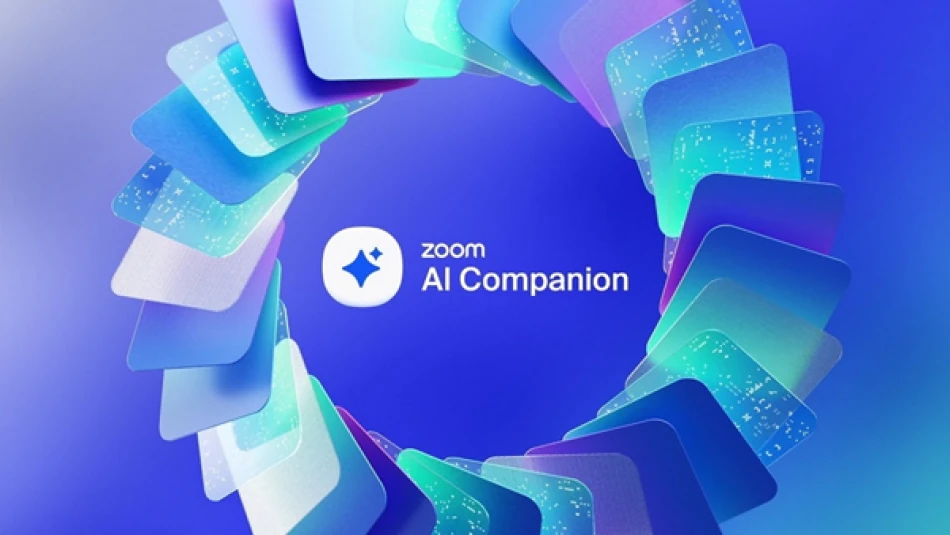
Zoom Unveils AI-Powered Features to Enhance Virtual Collaboration
Zoom Fights Back Against AI Note-Taking Apps with Cross-Platform Strategy
Zoom is making a bold move to reclaim territory lost to specialized AI meeting tools. The video conferencing giant just launched a suite of features designed to work across competitor platforms like Google Meet and Microsoft Teams, directly challenging standalone apps like Otter.ai and Fireflies that have been eating into its market share.
The Cross-Platform Gamble
Here's what makes this interesting: Zoom's AI companion now works on rival platforms. You can use it to take notes during a Microsoft Teams meeting or a Google Meet call. This is a major shift from the usual tech playbook of keeping users locked into your own ecosystem.
The company is also adding personal note-taking during in-person meetings, borrowing heavily from Granola's approach. Users can jot down their own notes, then let AI expand and organize them later.
Why This Matters Now
Zoom dominated during the pandemic, but the meeting landscape has changed. Specialized AI note-taking apps have gained serious traction because they work everywhere, not just on one platform. Companies like Otter.ai, Fireflies, and CircleBack have built businesses around this flexibility.
The numbers tell the story. While Zoom has AI transcription built in, cross-platform note-taking apps have seen massive growth by going where users actually are - which isn't always Zoom.
Smart Scheduling Gets Smarter
Zoom is also rolling out AI-powered calendar features that go beyond basic scheduling. The system will find time slots that work for everyone and can even suggest which meetings you could skip through a "make space" feature.
The platform will offer proactive meeting recommendations, suggesting agenda items and prep tasks. There's also a team AI assistant coming that could change how groups collaborate.
The Competitive Landscape
This move puts Zoom in direct competition with Microsoft's Copilot integration in Teams and Google's AI features in Workspace. But it also creates an odd situation where Zoom is essentially helping users stay on competitor platforms while using Zoom's AI tools.
The cross-platform search feature is particularly ambitious. Users will be able to pull information from both Google and Microsoft ecosystems, positioning Zoom as a universal meeting intelligence layer rather than just another video platform.
What This Means for Users
For businesses already invested in Microsoft or Google ecosystems, this could be appealing. You get Zoom's AI capabilities without switching your entire meeting infrastructure. But it also raises questions about data privacy and which company actually owns your meeting insights.
The real test will be execution. Cross-platform features are notoriously tricky to get right, and users have plenty of alternatives if Zoom's implementation feels clunky or unreliable.
Most Viewed News

 Layla Al Mansoori
Layla Al Mansoori






